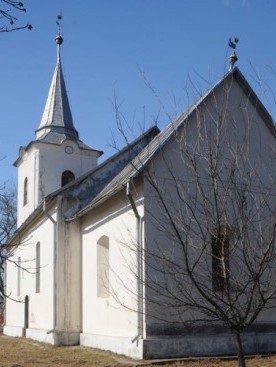The Calvinist Church –Velika BihanyThe first known owners of the settlement were the Bégányi family, who were mentioned for the first time in documents in 1319, but this reference to them is somewhat uncertain. According to a source stemming from 1552, the village was largely destroyed. In fact, the Crimean Tatars pillaged the settlement in 1567. The priest serving in this church dedicated to Saint George was mentioned for the first time in 1333. Later, in 1578, the church belonged already to the Calvinists. On the inside of the church, the chancel arch shaped as a lancet arch has been preserved. The sanctuary was covered with a vaulted ceiling in two stages. The initial vaulted ceiling must have been destroyed at the turn of the 14th and 15th centuries. The narrow ribs of the second, and extant, vaulted ceiling end in a disc-shaped cornerstone. The eastern wall of the sanctuary still preserves the tabernacle spanned by a lancet arch. Of special worth is a mural painting inside the church. József Lángi began exploring this work of art in 2000. The full size of the picture is 167 x 210 cm. A zigzag pattern framing surrounds the main field depicting Saint Helena with the cross. Two smaller figures also appear in the picture: one of them is holding the vertical beam of the cross, while the other one sticks his spade into the ground next to the bottom of the cross. Under her crown, Saint Helena wears a coronet and a veil reaching to her shoulders, her cloak is ornamented with a miniver trim. |













